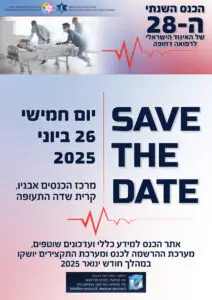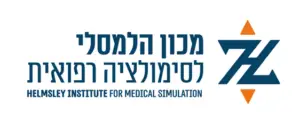פוסט זה זמין גם ב:
עברית
Podcast: Play in new window | Download
Date: August 19, 2024
Reference: Partyka et al. Serratus Anterior Plane Blocks for Early Rib Fracture Pain Management: The SABRE Randomized Clinical Trial. JAMA Surg 2024
Guest Skeptic: Dr. Sean Baldwin is an Emergency Physician practising in Sydney, Australia in both a large tertiary emergency department and a small regional emergency department. Interests include information systems and digital health, research and education.
Case: A 67-year-old male presents to your hospital emergency department (ED) after a fall from his bicycle. He has three left-sided rib fractures on imaging without underlying complications. He has severe pain with breathing and asks you what the best way to manage his pain may be.
Background: Rib fractures are a common injury, particularly for those over 65. This is partly due to the natural aging process, which often leads to decreased bone density and increased fragility. Older people are more susceptible to fractures from even minor trauma.
Rib fractures in this population are especially concerning because they are not only extremely painful but also associated with higher morbidity and mortality rates. The pain from rib fractures can lead to reduced mobility, impaired respiratory function, and an increased risk of complications such as pneumonia, making their management a critical aspect of care in older adults.
We have covered rib fractures twice on the SGEM. SGEM episode #324 looked at using spirometry to guide discharging older patients with rib fractures. The evidence was not robust enough back in 2021 to confidently use this potential tool.

Serratus anterior plane blocks (SAPBs) have been proposed as another potential effective treatment for pain control in patients with fractured ribs. This procedure involves the administration of a local anesthetic into the plane between the serratus anterior muscle and the rib cage, targeting the thoracic intercostal nerves that supply sensation to the chest wall. By blocking these nerves, SAPB provides substantial analgesia, helping to control pain and improve respiratory function without the systemic side effects associated with opioids.
The block is typically performed under ultrasound guidance, which allows for precise placement of the anesthetic and minimizes the risk of complications. For elderly patients, particularly those with multiple rib fractures, SAPB can significantly enhance comfort and facilitate deeper breathing, potentially reducing the risk of pulmonary complications such as atelectasis or pneumonia.
Clinical Question: Does the addition of a serratus anterior plane block to a protocolized bundle of care in the emergency department improve pain control?
Reference: Partyka et al. Serratus Anterior Plane Blocks for Early Rib Fracture Pain Management: The SABRE Randomized Clinical Trial. JAMA Surg 2024
- Population: Patients aged 16 years or older with clinically suspected or radiologically confirmed rib fractures.
- Exclusions: Patients intubated, pregnant, had received a prehospital SAPB, were transferred for urgent surgical intervention, had a moderate to severe traumatic brain injury, or had a major concomitant non-thoracic injury.
- Intervention: Serratus anterior plane block (SAPB) using ropivacaine in addition to the usual protocolized rib fracture management.
- Comparison: Standard protocolized rib fracture care alone without the SAPB.
- Outcome:
- Primary Outcome: Composite pain score reduction 4 hours after enrollment, defined as a reduction in the pain score by 2 or more points and an absolute pain score of less than 4 out of 10 points.
- Secondary Outcomes: Total opioid administration 4, 12, and, 24 hours from study enrollment, median pain scores over the first 24 hours of admission, delirium, pneumonia, subsequent regional anesthesia administered by inpatient pain services, intensive care unit and hospital length of stay (LOS), 30-day mortality, need for noninvasive or invasive mechanical ventilation, local anesthetic systemic toxic effects, and 30-day quality of life assessment
- Type of Study: Multicenter, open-label, pragmatic randomized clinical trial conducted across eight hospitals in metropolitan and regional New South Wales, Australia
Authors’ Conclusions: “This randomized clinical trial found that the addition of an SAPB to standard rib fracture care significantly increased the proportion of patients who experienced a meaningful reduction in their pain score while also reducing in-hospital opioid requirements.”

- The study population included or focused on those in the emergency department. Yes
- The patients were adequately randomized. Yes
- The randomization process was concealed. Yes
- The patients were analyzed in the groups to which they were randomized. Yes
- The study patients were recruited consecutively (i.e. no selection bias). No
- The patients in both groups were similar with respect to prognostic factors. Unsure
- All participants (patients, clinicians, outcome assessors) were unaware of group allocation. No
- All groups were treated equally except for the intervention. Yes
- Follow-up was complete (i.e. at least 80% for both groups). Yes
- All patient-important outcomes were considered. Unsure
- The treatment effect was large enough and precise enough to be clinically significant. Yes
- Financial conflicts of interest. None declared by the authors. The trial was funded by the NSW Trauma System Research Grant Scheme from the NSW Institute of Trauma and Injury Management.
Results: The researchers assessed 588 patients for eligibility with 210 patients being included in the trial. The median age was 71 years, with 62% male participants. Most patients had falls as the mechanism of injury, and the median number of fractured ribs was 3 to 4.
Key Result: The SAPB group had a significantly higher proportion of patients achieving pain control at four hours and required fewer opioids over 24 hours.
- Primary Outcome: 38 patients (41.3%) in the SAPB group and 18 patients (19.6%) in the control group met the predetermined primary outcome of pain score <4 and reduction of 2 or more (RR, 0.73; 95% CI, 0.60-0.89; P = .001).
- Secondary Outcomes:
- There was a significant reduction in cumulative opioid consumption in the SAPB group compared with the control group at all measured time points. Opioid requirement at 24 hours: 45 vs 91-milligram morphine equivalents.
- The rates of pneumonia, hospital and intensive care days, length-of-stay, 30-day mortality and subsequent regional anesthesia were similar between the SAPB and control groups. The incidence of delirium was higher in the SAPB group (p = 0.09).
- The use of non-invasive and mechanical ventilation was rare in both groups. There were no measurable differences between groups in any of the five quality of life dimensions recorded 30 days after injury.
- No episodes of local anesthetic systemic toxic effects were reported in patients undergoing SAPB.

2. Masking: Pain is highly subjective. Performing an unblinded procedure on a patient expecting the procedure to improve their pain will likely improve their pain, regardless of whether the treatment works. Outcome assessors were also not masked to group allocation. This could have introduced another bias into the trial. One way to mitigate this bias would be to have a sham block performed with saline.
3. Sample Size: This was a relatively small study with challenges in patient recruitment during the COVID-19 pandemic. However, it has promising results that need to be replication in a larger sample size to provide more confidence in making conclusions. Nonetheless, it is promising in terms of efficacy and will hopefully encourage larger studies to be undertaken.
4. Safety: While the trial was not powered to review evidence of complications, none were assessed for apart from local anesthetic systemic toxicity (LAST). This is a rare but serious adverse outcome from the use of local anesthetics. There is a small but non-zero risk of pneumothorax as well as a risk of bleeding and post-procedural infection which were not assessed. Post-procedural pneumothorax will be difficult to assess in a patient population reasonably likely to have a pneumothorax before the procedure.
5. The “Rib-FIB”. I have heard many clinicians refer to the SAPB as the Fascia Iliaca Block (FIB) of the chest. This gives a positive slant given that the FIB has become the standard of care in many areas for analgesia following a fractured neck of femur (NOF). There is good evidence that FIBs give better analgesia than opioids and reduce opioid consumption, however, there are no proven improvements in mortality or complications. This study is a promising first step towards promoting SAPB as a standard of care, though the time required to perform all these procedures in our current state of practice may be the rate limiter here.
Comment on Authors’ Conclusion Compared to SGEM Conclusion: We agree with the author’s conclusion about this trial and would add that larger studies are needed to ensure this result can be replicated.
SGEM Bottom Line: Serratus anterior plane blocks may reduce pain in ED patients with rib fractures however larger studies including consecutive patients with adequate masking that report adverse events are required.
Case Resolution: You advise your patient that his pain may be difficult to control and that multiple modes of analgesia are likely to be effective. You discuss the potential benefits and harms of a serratus anterior plan block which he elects to undergo in combination with other analgesia. His pain significantly improves, and he is admitted to the ward to continue his care.

Dr. Sean Baldwin
Clinical Application: Ultrasound-guided serratus anterior plane blocks are a promising analgesic modality in a patient population with significant pain. We look forward to more research being published in this area.
What Do I Tell the Patient? You have three broken ribs. These are very painful fractures. We will use some medications to help control your pain. There is an injection we can use in combination with other treatments that show promise. It is called a serratus anterior plane block. There is evidence it could decrease your pain but there are potential harms to any medical procedure. Would you like to discuss this further?
Keener Kontest: Last week’s winner was Dr. Steven Stelts. Not only did they get the right answer, but they also caught my mistake. I said Factor Xa when I should have said which DOAC is unique for being administered as a prodrug converted to its active form in the liver. The answer is Dabigatran.








